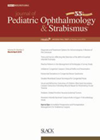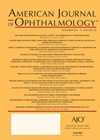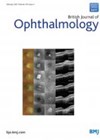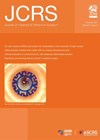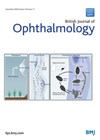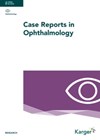
Journal Reviews archive for 2021
OCT angiography metrics in children
This prospective study aimed to quantify the vessel density of both the macular and optic nerve and foveal avascular zone (FAZ) values in 92 normal eyes of 92 children (42 boys, 50 girls) aged 13.4 ±2.65 years (seven to 18)....
ROP anti-VEGF treatment review
The purpose of this review was to consider data relating to risks and benefits of the use of anti-VEGF treatment for retinopathy of prematurity (ROP) over the past five years of 2015-2020. Ocular benefits include treatment of aggressive posterior ROP,...
Control of diabetic retinopathy after bariatric surgery
This systemic review and meta-analysis assessed prevalence of diabetic retinopathy including sight-threatening diabetic retinopathy after surgery. They included 14 studies with 110,300 surgical patients and 252,289 control subjects. They proposed that the risk of having any form of diabetic retinopathy...
Migraine and risk of retinal artery occlusion
This retrospective cohort study assessed whether migraine was associated with an increased risk of retinal artery occlusion. They reviewed a large insurance database of 418,965 patients who suffered with migraines between 2007 and 2016. These were then matched with an...
Ocular toxoplasmosis
This is a retrospective study of 106 patients between March 2011 and June 2018, of 37 IgM + group and 69 IgM - group of patients. The clinical features, demographics of patients with ocular toxoplasmosis (OT) were studied according to...
Why is there subretinal fluid at the macula?
This is a review article looking at the differential diagnosis of subretinal fluid in the macula that could be diagnosed as central serous chorioretinopathy (CSCR). The authors have categorised them into 12 groups: neovascular diseases, vitelliform lesions, inflammatory diseases, ocular...
What is paracentral acute middle maculopathy?
This is a review article characterising a clinical entity called paracentral acute middle maculopathy (PAMM). The article highlights the fact that retinal capillary plexuses are organised predominantly into three trilaminar capillary layers occupying the area between the nerve fibre layer...
Prevalence and incidence of uveitis
Uveitis encompasses a group of diseases characterised by the inflammation of fovea uvea which are potentially vision threatening. However, the frequency of this condition is unclear. This systematic review and meta-analysis aimed to provide estimates of the frequency of uveitis...
Nepafenac punctal plugs after cataract surgery: a new alternative?
The nepafenac punctal plug delivery system (N-PPDS) is an experimental L-shaped plug made of nonbiodegradable, preservative-free medical-grade silicone. It can deliver a sustained level of nepafenac for six weeks. This is a prospective, randomised, parallel-arm, double-masked, placebo-controlled, phase II pilot...
Visual and refractive outcomes and complications in FLACS versus CPS cataract surgery
This is a randomised, controlled study of 110 paired eyes from 55 patients that were randomised into either femtosecond laser-assisted cataract surgery (FLACS) or conventional phacoemulsification cataract surgery (CPS) groups. Visual, refractive outcomes, intraocular pressure (IOP) and complications were compared...
Real world results of cataract surgery in pseudoexfoliation
In this single-centre retrospective cohort study, the data of pseudoexfoliation (PXF) patients undergoing phacoemulsification cataract surgery from January 2010 to December 2019 was analysed in the National Health Service setting. The study comprised 23,329 eyes of 15,257 patients. Patients with...
Presentation of conjunctival intraepithelial neoplasia
Ocular surface squamous neoplasia is the umbrella term for malignancies of the conjunctiva and within the spectrum lies conjunctival intraepithelial neoplasia (CIN) – a non-invasive malignancy. CIN has been implicated with ageing, smoking and ultraviolet light exposure. The typical manifestation...

